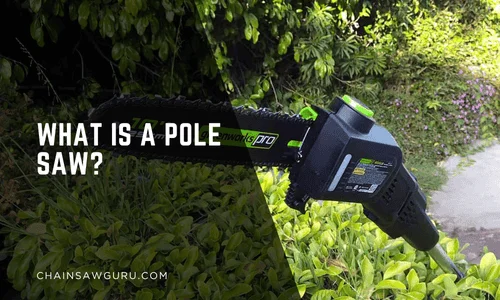I’ve helped dozens of homeowners, landscapers, and even weekend gardeners find the right pruning tool, and the one that consistently delivers on reach and performance is the pole saw. It’s not just another yard tool; it’s the game-changer for trimming hard-to-reach branches without stepping foot on a ladder. If you’ve ever struggled with overgrown trees or dreaded the wobble of a step stool, you’ll quickly understand why a pole saw makes all the difference.
Core Definition
Basic Description
At its core, a pole saw is simply a saw mounted on an extended pole, designed specifically to cut high branches from the safety of the ground. Its long handle allows you to reach into trees and prune without the risk of climbing.
Common Names
Pole saws go by many names, including “pole pruner,” “pole chainsaw,” or even “giraffe saw.” No matter the name, the function remains the same: safe and efficient tree trimming at heights.
Types of Pole Saws
Manual Pole Saws
Manual pole saws feature a curved pruning blade at the end of a telescoping or fixed pole. These are powered entirely by arm strength, making them ideal for light, quiet trimming. They’re perfect for small gardens or minor seasonal upkeep.
Powered Pole Saws
Corded Electric: Lightweight and plug-in powered, these are great for regular yard tasks where an outlet is nearby.
Cordless Electric: These battery-powered versions offer freedom of movement and are ideal for medium-duty pruning.
Gas-Powered: More powerful and designed for large yards or thick branches, these are heavier and louder but deliver unmatched cutting force.
Hydraulic: Typically used by professionals, hydraulic pole saws connect to machinery like boom lifts for safe and high-reach cutting in commercial jobs.
How Do Pole Saws Work?
Manual Operation
Manual pole saws rely on your effort. You position the blade over a branch and pull it back and forth to slice through. It requires more elbow grease but gives you full control and silence.
Powered Mechanisms
Powered pole saws use motors, either electric or gas, to rotate a small chainsaw blade at the tip. A trigger or button engages the blade, making cuts faster and with less effort. They’re efficient, especially when dealing with thick or numerous branches.
Key Benefits
Extended Reach Without Ladders
Pole saws can typically reach up to 10–15 feet, allowing you to trim tree canopies without climbing, which reduces both time and risk.
Reduced Risk of Falls
Staying grounded while pruning means far fewer accidents. In fact, John Ellis, a certified arborist, notes,
“Most pruning injuries occur from falls; pole saws virtually eliminate that danger when used properly.”
Versatile Power Options
Whether you’re dealing with a delicate apple tree or thick oak limbs, there’s a pole saw suited to the job, from manual models to industrial-grade hydraulic systems.
Choosing the Right Pole Saw
Task Type and Frequency
If you only prune occasionally, a manual or cordless electric model will serve well. For frequent, heavy-duty work, gas-powered options provide more cutting power.
Power vs. Convenience
Corded models are great for consistent power but are limited by plug-in range. Cordless versions offer freedom, while gas models deliver raw strength at the cost of added weight and noise.
Safety and Ergonomics
Look for lightweight designs with adjustable pole lengths. Features like anti-vibration grips and harnesses can reduce fatigue. As Lena Richards, a tool design specialist, advises:
“When choosing a pole saw, prioritize comfort; if it’s too heavy or awkward, you won’t use it efficiently or safely.”
Common Use Cases
Pole saws shine in a range of scenarios: pruning tall branches, shaping tree canopies, cleaning up after storms, or general backyard maintenance. They’re indispensable for anyone maintaining large trees.
Final Takeaways
A pole saw is more than just a long saw; it’s a smart, safe solution for high-trimming tasks. Available in manual, electric, gas, and hydraulic models, the right pole saw depends on your needs, power preference, and safety priorities. Pick the right tool, and your tree maintenance routine will be smoother, safer, and more satisfying.
- How to Cut a Straight Line with a Jigsaw? - October 31, 2025
- How to Cut a Circle with a Jigsaw? - October 31, 2025
- Can You Cut Acrylic with a Jigsaw? - October 31, 2025

